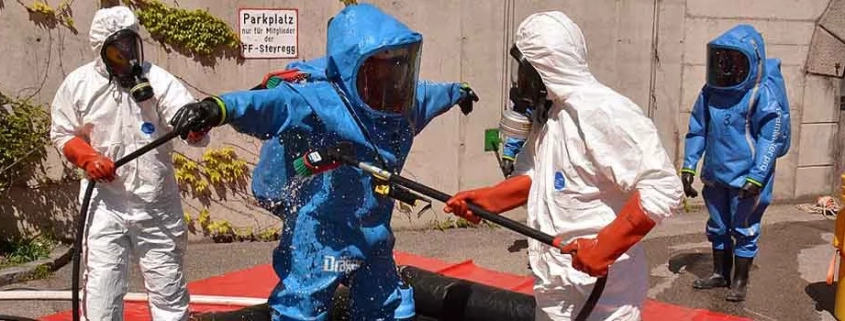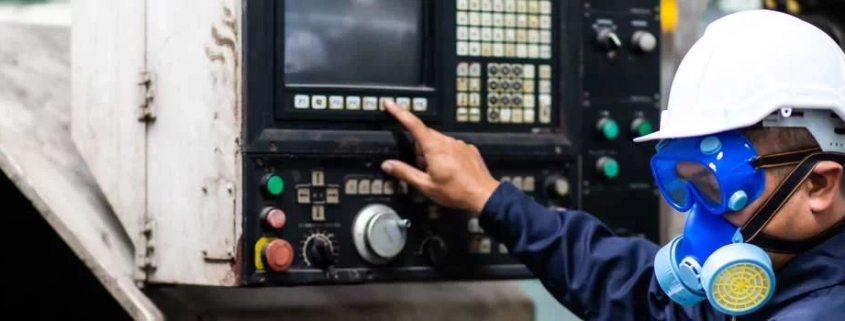- Kilauea volcano on the island of Hawaii, USA : It has been erupting since January 5, 2023 and is located in a closed area of Hawaii Volcanoes National Park. Volcanic gases, consisting of a mixture of water vapor, carbon dioxide and sulfur dioxide, are the main danger to the population. “We measured a sulfur dioxide emission rate of approximately 4,000 tons per day on January 8, 2023,” the USGS (United States Geological Survey) said. The instability of the crater, which could shake the world, has caused the region to be closed to the public since 2008.
- Cotopaxi volcano in central Ecuador : considered the most dangerous volcano in the world. It has been active since 2015 and woke up in October 2022. It is closely monitored today because it produces fumaroles up to 2 km above the crater. Volcanologists also saw ashfall in several areas around the volcano.
Different types of volcanoes
By tracking geographic location and the chemistry behind molten activity, we can distinguish several types of volcanic eruptions. Not all of them have the same consequences on the population and the environment.
- explosive eruptions : gas is captured in the rock of the volcano in fusion. This causes pressure to build until it is violently released, creating lava eruptions and various volcanic emissions (e.g., Mount Pinatubo in 1991).
- Effusive eruptions : As the magma becomes less viscous, it releases gas and the magma flows down the slopes of the volcano (i.e. Kilauea volcano in Hawaii in 2018)
- Fractured eruptions (may be included in extreme eruptions): large fissures located throughout the volcano open, causing large amounts of liquid lava to erupt several kilometers long (e.g. Grindavik volcano in Iceland in August 2022)
Word
For those who are less knowledgeable, we found it interesting to point out some definitions to better understand the subject of volcanoes.
Smoke : Gases contained in magma emerging from the surface of an active volcano.
Magma : molten rock found several kilometers deep within the Earth, which we call “magma chambers.” It consists of dissolved gases, liquids, and solid elements such as crystals. As long as it remains underground, it is known as "plutonic rock".
Caldera : Large, nearly circular volcanic crater with a flat bottom, bounded by cliffs, and greater than 2 km in diameter. The origin of calderas is different from that of craters.
Pyroclastic flow or flow : Flow at the base of a glowing cloud that rises slightly above the ground. They range in size from volcanic ash to rocks larger than a house. It is a dense aerosol composed of volcanic gases and particles.
Dross : Solid residue formed when lava cools and disintegrates.
Halides : Formed by the combination of metals with chlorine, fluorine, bromine and iodine are poisonous acids.
CAMS (Copernicus Atmospheric Services Monitoring): A monitoring service that provides information on air pollution, solar energy, greenhouse gases, and climate worldwide
Volcanic gas emissions
In 1815, Mount Tambora in Indonesia formed a caldera 6 km in diameter and 1000 m deep; boiling ashes mixed with gases rose 45 km into the sky; When it fell back, pyroclastic flows crashed into Earth, killing more than 10,000 people. Ashes and gases entering the atmosphere darkened sunlight and increased the Earth's reflectivity, resulting in no summer. The explosion itself killed more than 10,000 people, but an estimated 80,000 died in its aftermath from starvation and disease brought on by gases in the atmosphere.
Composition
Magma, volcanic eruptions It consists of dissolved gases (sulfur dioxide, carbon dioxide, hydrogen sulfide and halides), which are the driving force . As magma rises to the surface, the pressure decreases and the volcano powerfully releases gases into the atmosphere.
Carbon dioxide, which volcanoes emit between 180 and 440 million tonnes per year, is colorless and odorless, so the gas is difficult to detect. Therefore, to prevent and predict the protection of people in areas with active volcanoes gas detectors can be installed. Researchers also found that when in direct contact with volcanic emissions they may wear portable gas detectors. Even if this gas dissolves to very small concentrations, CO2 When it cools, it becomes heavier than air. Therefore, it can move to low-lying areas where we can find high concentrations.
Intense SO2 emissions are harmful to humans as well as the environment because they can turn into acid rain, horribly polluting the air.
Hydrogen sulfide is the gas most recognized for its unpleasant odor. This gas specification helps anyone who comes into contact with H2S protect their mucous membranes.
Hydrogen halides consisting of fluorine, chlorine and bromine halogens They are extremely dangerous toxic acids. They dissolve rapidly in water or the atmosphere and can cause acid precipitation.
Climate and environmental issues
We don't realize this because volcanoes are all over the world, but they play an important role in changing the climate. When they explode, they release ash, metal, as well as large amounts of gases and particles (or aerosols) into the atmosphere, which will change the climate locally for the duration of the explosion or over a wider area after the force of the explosion. These effects vary depending on the power of the volcano and its geographical location. For this reason, volcanoes in tropical regions will spread all over the world. volcanic emissions can produce. For example, the eruption of Mount Pinatubo in 1991 caused particles and gases to shoot up more than 20 km high and orbit the earth for three weeks, causing a global meteorological change.
” The impact of major volcanic eruptions on our climate […] is caused by the emission of particles that effectively scatter solar radiation, mainly fine ashes and sulphates ” explains Santiago Arellano. Thus, the sun's rays pass through a dust filter that reduces the power of the star. Thus, the more powerful the explosions, the higher the emissions and the less sunlight reaches the earth. We observed a decrease of 0.5°C due to the eruption of a volcano.
On the other hand, small eruptions cause lingering emissions at lower altitudes. For this reason, they drift more easily with precipitation and do not remain in the atmosphere. They have no impact on the climate.
Some researchers say global warming They are investigating the possibility that it could have an adverse effect and could be the source of proliferation of volcanic eruptions. As an example, we can consider the melting of glaciers beneath volcanoes that are not active today but may become active when these blocks disappear. This may also be true for volcanoes located at altitudes where the ice cover is likely to disappear and hence volcanic landslides to occur.
As mentioned before, sulfur dioxide emissions can turn into acid rain, which can be disastrous for the environment. Indeed, the combination of H2O (water) + O2 (oxygen) + SO2 (sulfur dioxide) = H2SO4 (sulfuric acid) results in an acid that is destructive to soil and crops. Farmers are torn between enjoying the fertile volcanic soil and having their crops destroyed by eruptions of lava, ash and gas.
Dangers to the population
It causes deterioration of air quality and therefore public health and industries such as aviation (atmospheric from volcanic gas emissions It is essential to monitor for the presence of volcanic emissions that could cause harm (first sector affected). The monitoring program called Copernicus (CAMS) therefore aims to monitor the atmosphere by observing the movement and behavior of sulfur dioxide (SO2) contained in volcanic emissions during eruptions.
CAMS was able to detect poor air quality in North Africa, Europe, over the Atlantic Ocean and in the Caribbean during the December 2021 eruption of the Cumbre Vieja volcano in La Palma; This explosion created a lot of sulfate aerosol in the air. The CAMS service uses observations generated by satellites to monitor SO2 flux and combines this data with global-level information to predict the air quality composition over five days. Some sensitive individuals may experience low levels of toxicity in the air. Even if there is gas, it can be affected.
Despite erupting lava that are not explosive, internally erupting volcanoes will release many gases that are truly dangerous to humans: sulfur dioxide, carbon dioxide, hydrogen sulfide, and halides. Gases will reach the population depending on the geographical location of the volcano and weather conditions.
Even a 3% CO2 gas level is a significant danger to residents and they can experience serious health problems such as headaches, dizziness, accelerated heart rate and shortness of breath. Above 15% CO2 can cause unconsciousness and death.
Sulfur dioxide is a very irritating gas to the skin, respiratory tract, eyes, nose and mouth. A researcher should therefore be equipped with a portable single gas detector dedicated to SO2, such as the Dräger Pac 6500 . It is a suitable complement to respiratory protection, at least to detect the concentration level of the gas and thus predict any contact.
Regardless of the gas concentration, hydrogen sulfide is highly toxic to the respiratory tract and causes severe irritation. If there is prolonged exposure to the gas, lung failure, loss of consciousness or cardiac arrest may occur.
Hydrogen halides cover the released ash particles and cause pollution of drinking water, agricultural areas or mountain pastures.
Delayed risks may arise from the spread of moving gas. Therefore, the volcano in the Canary Islands, which woke up in September 2021, brought a huge cloud of poisonous gases that caused a village to lock itself in for several hours, three months after the start of its eruption.
Collaboration of professions
Climate scientists and volcanologists work closely together to ensure conservation through their detections and analyses.
“ Volcanologists want to monitor the rate and scale of emissions of gas, lava, or ash to determine the physical state of the volcano and predict its activity. “Meteorologists are interested in monitoring volcanic eruptions to better understand the circulation patterns and interaction of volcanoes with the atmosphere,” explains one researcher. “To measure climate forcing, climate scientists want to know where, how high and in what quantities certain gases are emitted. Aviation authorities aim to detect volcanic ash eruptions to warn pilots and prevent accidents. ”
The tools volcanologists use are not devices designed to monitor volcanoes, but they have other goals in their design (for example, devices that monitor the ozone layer) that allow them to make analyzes and predictions. For example, at the rim of the crater of an active volcano to analyze the concentration rate of a gas They can use colorimetric tubes.
Exploring a volcano: Choose the right equipment
In an active but not erupting volcano, fumarole escapes. It consists of poisonous gases, such as when at the top of the volcano Wearing mask is essential. Fumarole consists of water vapor (the harmless and majority component), sulfur dioxide and hydrogen sulfide. You can wear a gas detector ( Ventis Pro ) to get alerted quickly and evacuate the area quickly.
Resistant to heat, gases and any visible or invisible smoke for exploring a volcano you need a protection . Hiking boots are a solid foundation for walking without worrying about all kinds of debris-filled obstacles and difficult access routes. A windbreaker, fleece, beanie or hat and scarf are essential complements to basic protection.
If you are going to visit an explosive volcano, make sure to visit a volcano as ash particles, no matter how small, are very harmful. You must have a dust mask. The GVS Elipse 3 mask will be a great addition to your equipment. Complete your outfit with a hard helmet to protect yourself from possible slag that may fly and hit you.
To maximize your safety, we recommend wearing large, tightly sealed goggles to fully enjoy the show while protecting your eyes from atmospheric particles. That's why you can choose the GVS Elispe Integra mask.
To protect yourself during a trip near a volcano that releases a lot of sulfur gases, it is essential to wear a full-face gas mask with an ABEK-P filter, which specifically filters out acidic gases. For asthmatics, take this type of filter no matter what volcano you explore.
Many of the gases released from volcanoes are irritating, so it is necessary to bring full-body clothing. If you don't have masks, a moistened scarf will protect your airways in case of unexpected gas emissions.
You may need to use your hands when climbing slopes. That's why it's important to have gardening gloves that are resistant to the corrosive products available.
We have seen the mutual relationship that can exist between climate change and volcanic eruptions. UNESCO observers predict that the Mediterranean will experience a tsunami within 30 years due to volcanic activity on the seabed. “From underwater exploration to preventing populations, the organization is multiplying measures to confront the danger “.











